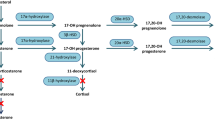Opinion statement
The enormous economic cost of migraine attacks is only now becoming evident. One estimate is that they cost $6 billion per year in the United States alone. If treatments are effective enough to keep patients at work, considerable expenditure for treatment can be justified. Most patients never seek medical advice, and one assumes that their headaches are under satisfactory control with simple over-the-counter analgesics. The minority seeking medical advice, who suffer the bulk of absences from work and loss of efficacy, should be offered treatment potent enough to enable them to function normally, if possible. The new serotonin agonist triptan drugs are proving immensely valuable, and there is little doubt that they are cost effective in patients who are severely affected. One should always be aware of the potential for these medications to cause headache if taken in excess. Regular preventive treatment and potent analgesia should be considered in patients with frequent spontaneous attacks of headache.
Similar content being viewed by others
References and Recommended Reading
Goadsby PJ, Olesen J: Diagnosis and management of migraine. Br Med J 1996, 312:1279–1283.
Ferrari MD: Migraine. Lancet 1998, 351:1043–1051. An outstanding comprehensive review of migraine symptomatology, epidemiology, pathophysiology, and treatment; fully referenced.
Bendtsen L, Jensen R, Olesen J: A non-selective (amitriptyline), but not a selective (citalopram), serotonin reuptake inhibitor is effective in the prophylactic treatment of chronic tension-type head ache. J Neurol Neurosurg Psychiatry 1996, 61:285–290.
Ophoff RA, Terwindt GM, Vergouwe MN, et al.: Involvement of a Ca2+ channel gene in familial hemiplegic migraine and migraine with and without aura. Headache 1997, 37:479–485. A good review of recent publications on the role of brainspecific P/Q-type calcium channel genes in the extremely rare familial hemiplegic migraine and in more orthodox types of migraine with or without aura.
Ferrari MD, Haan J: Drug treatment of migraine attacks. In Headache. Edited by Goadsby PJ, SilbersteinSD. Woburn, MA: Butterworth-Heinemann; 1997:117–130.
Lance JW: Preventive treatment in migraine. In Headache. Edited by GoadsbyPJ, SilbersteinSD. Woburn, MA: Butterworth-Heinemann; 1997:131–141.
Olesen J: Analgesic headache. Br Med J 1995, 310:479–480.
Ramadan NM, Schultz LL, Gilkey SJ: Migraine prophylactic drugs: proof of efficacy, utilization and cost. Cephalalgia 1997, 17:73–80. This article is a comprehensive assessment of the scientific rigor of published trials of migraine prophylactic medications, including their cost effectiveness.
Goadsby PJ: A triptan too far? J Neurol Neurosurg Psychiatry 1998, 64:143–147. A comprehensive meta-analysis of the increasingly large group of triptan drugs.
Tfelt-Hansen P, Henry P, Mulder LJ, et al.: The effectiveness of combined oral lysine acetylsalicylate and metoclopramide compared with oral sumatriptan for migraine. Lancet 1995, 346:923–926.
Holroyd KA, Penzien DB, Cordingley GE: Propranolol in the management of recurrent migraine: a metaanalytic review. Headache 1991, 31:333–340.
Author information
Authors and Affiliations
Rights and permissions
About this article
Cite this article
Peatfield, R.C. Migraine. Curr Treat Options Neurol 1, 450–457 (1999). https://doi.org/10.1007/s11940-996-0008-8
Issue Date:
DOI: https://doi.org/10.1007/s11940-996-0008-8



